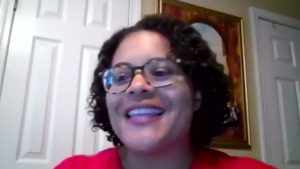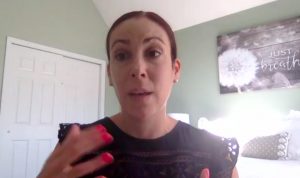Teachers want all their students to feel seen, valued, and heard—yet it can be hard to know how to begin those conversations about race and cultural identity that can make students feel safe and welcome. That’s why Westport educators Faith Sweeney and Dr. Kim Kassay led a session yesterday at CEA’s Virtual Summer Conference titled How to Engage Students in Conversations About Race (K-5).
Sweeney, a literacy coach, and Kassay, a school psychologist, first started leading discussions about race with students at their elementary school because of racist incidents that had occurred. They have since moved on to being proactive and bringing the conversations to classrooms so that students have the language and skills necessary to have a strong positive identity and treat classmates with empathy.
“We try to tie our conversations into social emotional learning—we use the RULER approach in our school,” says Kassay. “It’s about managing emotions, expressing empathy. It’s helpful to use these same kinds of conversations and read alouds.”
“We want to make everyone feel welcome, and we want our kids to be upstanders and help others in need,” says Sweeney, who also serves as NEA director alternate.

Westport literacy couch Faith Sweeney says conversations about race help make all students feel welcome in the classroom.
Kassay told CEA members attending the training that by ages two to four children begin to demonstrate in-group preferences. “It’s very normal for the brain to develop that way, so we as educators have to explain that we’re all in this together.”
She said that by age 12 children are often more set in their beliefs, making elementary school a wonderful time to start conversations about race and identity and help students realize how their brains are working and how they’re thinking about others.
“Read alouds are a great way to start the conversation,” Kassay said. “It’s okay to talk about racial differences—starting young you can talk about different skin colors. It normalizes it and lets kids know that talking about race isn’t a bad thing, it’s part of who we are.”
“We have to make sure we are really aware of our biases,” says Sweeney. “I have biases that I have to work on every day to make sure I’m a better human being. It’s part of how our brain works and we need to recognize that so we can interrupt it.”
Sweeney said that as a society we go quickly to conversations about race, but don’t always talk about origins, which can be especially important to students who are immigrants or who are the children of immigrants.
“The better you know your students, the more you can connect their identity and their experiences to classroom learning,” Sweeney says. “Rather than selecting a book at random you can select materials that allow them to see themselves and their interests.”
Sweeney said that she and Kassay regularly use literature to ground their conversations and help students understand how language impacts people. This past year they held a parent-student book club with second- and third-graders and their families. Because of the hybrid schedule, Wednesdays were half days at their school, and they were able to hold the book club on Wednesday afternoons. At some point in the future, they hope to be able to hold in-person evening book club gatherings.

School psychologist Kim Kassay shares that read alouds are a great way to begin conversations about race with students.
“Parents were amazed at what their children and other children had to say,” Kassay said.
Sweeney emphasized that when choosing literature to share with children and in conversations it’s important to not only talk about injustices or civil rights struggles. “It’s important to choose books that show children of color in everyday situations.”
She said that there are many ways to incorporate conversations about race into the curriculum, but that if a teachable moment comes up, it’s okay to pause and create space for discussion. “The curriculum is always going to be there, but you’re not going to get that moment back.”
Kassay said that it’s okay to share what you’re feeling with students. “When they ask about a hate crime they heard about on the news, you can let them know it makes you feel sad.”
“We don’t know all of the answers, and it’s okay to share that with your class and say, ‘I don’t know enough about that right now, but I will research it and get back to you,'” Sweeney said.
Sweeney and Kassay both said that they have found it helpful to have a partner to lead discussions with and that their unique skills and backgrounds balance each other well and are an asset when talking to children. They make sure to share what they hear from students with their principal and include her in their planning, and said they now have support from most parents in the school community.
For more information, register to attend How to Engage Middle and High School Students in Conversations About Race, which is being held virtually tomorrow, August 4, 3:30 – 5:30 pm, as part of CEA’s Summer Conference.







